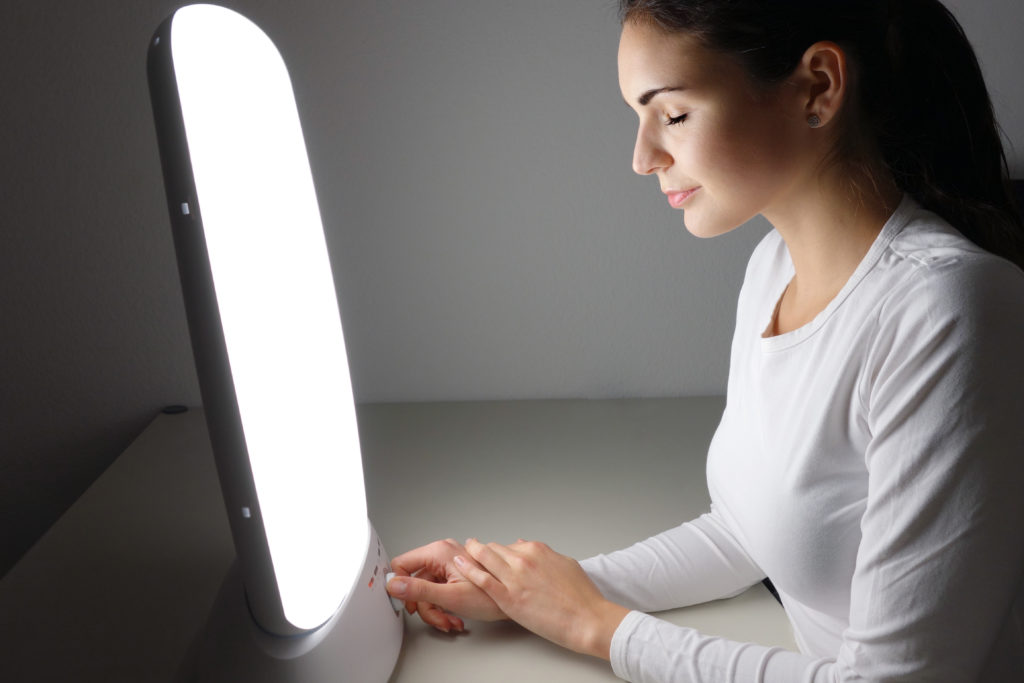A Dancer’s Guide to Seasonal Affective Disorder (SAD)
The buzz of Nutcracker has worn off, grueling rehearsals are ramping up, and it’s just. so. cold. No wonder you’re feeling a bit down this winter, and you’re certainly not alone.
According to dance psychologist Dr. Miriam Rowan, seasonal affective disorder (SAD) is a form of depression in which symptoms specifically develop over the course of the winter months, and then fade as springtime arrives. These symptoms include a lack of interest or pleasure in activities you’d normally enjoy (such as dance), changes in energy and appetite, trouble concentrating in class or sleeping at night, or feeling anxious, sad or worthless.
Why You’re Feeling SAD
Interestingly enough, SAD symptoms are linked to disruptions in your body’s natural clock, or circadian rhythm. This regulates alertness, hormones, eating habits and more. Normally, your body relies on exposure to bright light to synchronize these natural rhythms. During the winter months—when you’re inside more often and there’s less sunlight to begin with—these cycles can be altered, potentially leading to depressive symptoms.
Coping With Sad
It can be frustrating to feel like you’re not performing at your best, and you may even feel guilty for not enjoying dance right now as much as you’re used to. Luckily, there’s a myriad of coping strategies to lessen the symptoms of SAD.
Try Something New
“The gold-standard behavioral treatment for depression is ‘behavioral activation,’ which is a fancy word for getting out and being active,” Rowan explains. “Specifically, activities that help boost your confidence and/or are pleasurable in some way.” Rehearsals stressing you out? Throw in a five-minute improv session before or after, and allow yourself to move without judgment. Incorporate a new form of movement into your routine, like a walk after school or a few minutes of yoga in the morning or evening. Better yet, pick up a new, no-expectations-attached hobby completely separate from dance, like baking, crafting, photography or learning an instrument.
Journal It Out
According to Rowan, “Journaling is a helpful tool for identifying one’s feelings, validating and clarifying one’s own experience, and planning how to cope most effectively.” If writing out everything you’re feeling seems daunting, start by keeping a gratitude journal. Commit to writing three things you’re thankful for every day, no matter how big or small. Practicing gratitude daily has been shown to improve your mood, and can even improve your dancing.
Set a Goal
As a dancer, it’s likely that you’re pretty goal-oriented and enjoy feeling accomplished. Use that to your advantage this season by setting some easy goals for yourself. “Make a list of your three core values, and then create one specific, time-bound, measurable goal using one of them,” Rowan recommends. “For example, if the value is creativity, make a goal to spend 10 minutes each morning free-writing or drawing.”
Amp Up Your Relaxation
According to Rowan, “Relaxation practices that decrease the stress response of the body can be helpful.” Meditate, take a long bath, listen to music, or connect with loved ones and pets. Prioritize time to decompress with the people and things that bring you a sense of calm. Remember: Dancers never have to “earn” their rest.

Create Your Own Sunshine
Light therapy may partially correct your body’s circadian rhythm. “Happy lamps” thus can effectively treat depression symptoms specifically related to SAD. There are tons of different light-therapy lamps on the market. Experts recommend spending about 30 minutes 12 to 18 inches from the lamp each morning (with eyes open, but not necessarily staring into the light).
Work on Mental Coping Skills
As we continue to navigate COVID-19 on top of wintertime blues, many of Rowan’s patients have expressed sadness, disappointment and anger over canceled shows and opportunities. She recommends dancers practice “reality acceptance,” which has roots in Zen Buddhism. “The idea is that pain, whether emotional or physical, plus non-acceptance equals suffering,” she explains. “Instead of suffering, focus on accepting that reality is what it is before trying to change what you can.”
Ask for What You Need
Don’t be afraid to discuss how you’re feeling with a trusted teacher, friend, or parent. Depression can seem isolating, especially since dancers are taught that “the show must go on.” But it’s likely you’re not the only one feeling SAD right now. If your symptoms seem too overwhelming to handle or they persist longer than a single season, consult a doctor. They may recommend other treatment options for you.




